This article was co-authored by Molly DeVoss. Molly DeVoss is a Certified Feline Training and Behavior Specialist (CFTBS), a Certified Cat Behavior Consultant (CCBC), a Fear Free Certified Trainer (FFCT), and the Founder of Cat Behavior Solutions. Molly specializes in using positive reinforcement to modify and prevent unwanted behaviors in cats and reduce cat shelter surrender. Molly has sat on the Dallas Animal Advisory committee since 2013 and was voted one of the Top 12 Extraordinary Cat Behaviorists of 2020 by Catpetclub.com. She is certified by both the Animal Behavior Institute and the International Association of Animal Behavior Consultants. She is also the host of the weekly podcast Cat Talk Radio.
There are 12 references cited in this article, which can be found at the bottom of the page.
wikiHow marks an article as reader-approved once it receives enough positive feedback. This article has 17 testimonials from our readers, earning it our reader-approved status.
This article has been viewed 137,849 times.
Sometimes, you may want a pet despite your parents’ disapproval. While it is not advisable to hide a pet from a parent, you may have gone ahead and adopted an animal. While you plan to eventually tell your parents, you can hide your new friend for a short time by keeping them out of the way, cleaning up after them, and covering up the smell. Hiding a pet takes substantial effort, and some pets are more challenging to hide than others. But if you are insistent on hiding the pet, there are certain steps you can take to keep yourself and your pet out of trouble.
Steps
Covering Up The Evidence
-
1Decide where you will keep your secret pet. You should find a space that has plenty of room for the specific pet where your parents are unlikely to stumble upon it. You may want to have a back-up room if your parents need the space unexpectedly. Keep them contained within this space. Options include:
- Your bedroom
- A basement
- An unused garage
- The backyard (if it is a caged pet or a cat)
-
2Keep the pet at someone else's house. If you cannot hide the pet in your own home, you can ask a friend to hold onto the pet for you. Make sure that you still provide food, toys, and bedding for the pet. Promise your friend that you will find the pet a new home if your parents do not eventually let you move the pet into their house. This is a better option for larger animals, such as cats and dogs.Advertisement
-
3Place air fresheners in their room. Animals can smell bad. If the smell is not taken care of, it will soon spread throughout the house, alerting your parents. Make sure that the pet’s room is constantly cleaned. Use air fresheners to combat the smell.
- Do not leave lit scented candles in the room as this is a fire risk.
-
4Soundproof the room. It will be important to make sure your parents cannot hear your pet. Dogs bark; cats yowl; hamsters run endlessly on creaking wheels. While you cannot perfectly soundproof a room, you can minimize the noise.
- Try hanging cork boards or foam squares on your wall. (You can buy both at a craft store).[1] You can decorate these so that it does not look suspicious.
- Place a rug under your door to prevent sound from going through the crack.
- You can also cover up the noise by leaving a stereo or TV on while you're out. Keep it on a medium volume. If it is too loud, your parents may enter the room to turn it off.
-
5Buy the necessities for your pet. You won’t be able to ask your parents to buy your pet a bed or to supply you with pet food. Save up some money so you can buy everything your pet needs yourself. Pets generally need food, a water bowl or bottle, toys, and bedding. Some may require a cage.
- Dogs will need a bed, blankets, chew toys, treats, dry kibble, dishes for food and water, and a leash.[2]
- Cats need a scratching post, toys, food and water bowls, dry food, a litter box, litter, and a bed.[3]
- Small rodents like guinea pigs, hamsters, and mice need a cage, dry food pellets, fresh vegetables, a water bottle, timothy hay (to line the cage), toys like wheels and tunnels, and soft bedding.
- Reptiles and snakes will need a glass terrarium, UVB basking lights, food (which may include pellets or live bait), rocks, and plants.[4]
-
6Clean up after your pet. Animals shed, and they can leave their fur on carpet, chairs, couches, and clothes. Use a lint roller to pick up stray fur. Vacuum to remove loose fur, wood shavings, or food pellets. Clean the room at least once a week, making sure to dust and disinfect the room.
- If you don’t have a lint roller, masking tape can also work. Unroll a few inches of tape, and press the sticky side down on the furry surface. Lift it to remove fur.
- Do not use disinfectants containing ammonia. Dogs and cats do not like the smell, and this can cause them to pee around the room![5]
-
7Have a backup plan. Even if your plan may be working well, most pets can't spend all of their time hiding. You should keep your pet hidden for about two weeks. If you think your parents are ready to negotiate, introduce them to your new pet and explain to them how well you took care of it. If all else fails, make sure you have a good home for your pet to go to if your parents say no.
Hiding a Dog
-
1Walk the dog when your parents aren’t home. Dogs need plenty of time outside. Exercise is important, and they will need to poop and pee. Dogs are very difficult to hide for this reason; do not think that you can just keep the dog inside. Wait until your parents are out of the house to walk them. You can also wake up early before they are awake to take your dog outside. They may see your dog as you bring him in or out of the house, so be careful. Use a backdoor if possible.
-
2Housetrain the dog. Frequent accidents in the house can be a major hint for your parents, especially if they smell or find the evidence. At first, you will have to walk your dog every two hours. Encourage them to go in the same spot every time. Give them a treat when they have gone.[6] This will encourage them to only go outside.
- If the dog leaves a mess in the house, you should be sure to pick it up right away. Use scented disinfectants to mask the smell.
-
3Train the dog not to bark. Noisy dogs will soon alert your parents to their presence. When your dog starts barking, give them a treat, and use a word like “quiet.” The treat will get them to momentarily stop barking. Soon, they should stop barking whenever they hear the command “quiet.”[7]
- Dogs will bark. They bark to protect their territory, because they afraid or sick, or because they are bored. There is no proven method to stop barking completely, so make sure their room is soundproofed.
-
4Wash the dog’s bedding in a separate load. Don’t just toss furry blankets into the laundry hamper. You will have to wash all of your dog’s bedding yourself in the washing machine. Save up dirty blankets and beds until you have a full load.
-
5Wash the dog outside of the house. It may be tempting to wash the dog in a bathtub, but this can leave a big mess that your parents can find. If you can, take your dog outside for a bath. Use a garden hose, or fill up a tub of water and bring it outside. Comb your dog’s hair before washing, and use dog shampoo. Make sure the dog is dry before you bring him back inside. You should probably try this while your parents are not home.
Concealing a Cat
-
1Choose dry food instead of wet food. Wet cat food tends to made of smelly fish. Leaving open cans of it open around the house can leave a suspicious scent. Furthermore, wet food may attract more pests, such as flies or roaches. Choose dry pellets instead.
-
2Disguise the litter box. There are many creative solutions for hiding a litter box. An easy solution is to cut a cat sized square from a cardboard box. Place the box upside down over the litter box. The hole should form a little cat door. Drape a blanket over the box, making sure that the side with the cat door is left open. You can also stick the litter box behind other furniture. Just make sure that your cat can go in and out with ease.
-
3Wash the litter box twice a week. While you should be scooping out feces every day, you should change the litter twice a week.[8] Empty the cat litter in a separate trash bag. Don’t just dump the litter into the trash can. Your parents may find it later, and it can tip them off about your secret cat. After cleaning the litter box, take the trash bag out to the curb or dumpster right away. Wash out the box with mild dish soap and water. Make sure to rinse completely.
-
4Buy a scratching post. Cats have a natural need to scratch. If they don’t have a scratching post, they will scratch up furniture instead. Your parents will really notice your cat if they see their claw marks everywhere! You should have a few scratching toys for your cat.[9]
Camouflaging a Cage
-
1Invest in a proper cage. Certain animals—such as hamsters, guinea pigs, rabbits, lizards, and snakes—require a cage to live in. You may be tempted to let your animal friend run freely around the room, or you may try to make a shelter out of a drawer or cupboard. Do not do this. Your pet may get loose, or there may not be enough air for your pet to breathe. If your parent sees them running loose in the house, they may think it is a wild animal and get rid of it. Always get a proper pet cage, hutch, or tank.
- Guinea pigs and rabbits can have hutches or cube and coroplast cages.
- Hamsters and mice can live in wire cages.
- Fish live in tanks or aquariums. Some fish will require aquarium lights.
- Reptiles live in glass terrariums. They will need a basking lamp with a UVB lightbulb.[10]
-
2Hide the cage in a corner or closet. You can place the cage in a corner and arrange your furniture around it so that it cannot be seen. Similarly, if your closet is big enough, you can try fitting it there. Be sure to leave your closet door slightly open so there is plenty of air getting to your pets.
- Some pets do not like being in the dark constantly. Leave a closet light on, or make sure that there is a small light attached to your cage.
-
3Place the cage on a high shelf. Few cages are small enough to fit under a bed, but you may be able to keep it out of view on a shelf. Make sure you that you can easily reach the cage without trouble. Use books and other items to hide the cage on the shelf. This works best for smaller cages, such as hamster cages, reptile terrariums, or small fish bowls.
-
4Cover the cage with a blanket. If you have a guinea pig cage or rabbit hutch, you can drape a blanket over the cage to hide most of it. Make sure that there is at least one wire/mesh wall free so your pets can breathe and look out. If the cage can support it, place light objects, such as notebooks or jewelry boxes, on top to disguise it.
- If you have a fish tank, a wire hamster cage, or a reptile terrarium, this is not a good idea, as the top may need to be left open for oxygen, lamp wires, or exercise.
-
5Clean the cage every week. You should scoop out any poop every day, but at least once a week, do a thorough cleaning. Remove your pet into a separate box or cage. Scoop out the hay or litter into a plastic garbage bag. Take it to the curb immediately. Wash the cage down with dish soap and water or a mixture of vinegar and water. Let it dry, refill with shavings, and put your pet back in.
- If you have a reptile in a terrarium, be sure to spray down the glass with a disinfectant.
- If you have a fish, take the fish out to another bowl or a cooler full of water. Scoop out any debris, and replace the water with fresh before returning the fish to the bowl.
-
6Turn off lights at night. For pets that need light, you can switch off the light when it gets dark. Most reptiles need sunlight during the day but complete darkness during the night.[11] The same goes for most types of fish. You can give them a few hours of light at night before shutting off their aquarium light.[12] This is convenient for you as it ensures that your parents will not be alerted by any lights at night time.
- Always double check the guidelines for the specific breeds or species you own. Some need more light than others, and some may require light at night.
Revealing Your Pet
-
1Clean your pet's bedding or cage. When you show your parents your pet, you'll want to put its best face forward. If possible, give your pet a bath. Clean out their cage, and wash their bedding. Make sure that their room is tidy. If your parents see that the animal is well cared for, they may be more likely to let you keep it.
-
2Find an alternate home. Just in case your parents say no, make sure you have your back-up plan all set. Find a friend or relative who is willing to take your pet for you. Offer them all of the necessary pet supplies. Avoid taking your pets to a shelter unless you have no other option.[13]
-
3Practice what you will say. You want to make sure you appear mature and collected when you show your parents your pet. Since this can be an emotional topic, write down what you want to tell them. Try saying it in front of the mirror a few times.
-
4Sit down with your parents. The best time to talk to your parents is at home when no one is distracted. Tell your parents that you want to talk, and ask them to sit down with you. Do not tell them as they are driving, cooking, or cleaning. You may be able to talk with them over dinner.
- Be careful about approaching them right after they get home from work. They may be tired and stressed out. Wait for them to relax before you talk to them.
-
5Tell them. Be honest and straightforward. Let them know how well you have taken care of the pet. If they haven't noticed, point out that the pet is not as noisy or smelly as they may have thought. Acknowledge that you broke the rules, and apologize for it. Ask them if you can keep the pet. Promise to take care of the pet yourself.
- For example, you can say, "I found a cat that needed a home. For the last two weeks, I have cared for the cat in my bedroom. She is very sweet, and I have taken care of her all by myself. I hope to continue caring for her. I know I have broken your trust, but please, can I keep her?"
- If your parents say no, you have to live with consequences. Give the pet to another home along with all of their bedding, toys, and food. You may be grounded or punished.
-
6Show your parents the pet. Bring your pet out to show them. Let them hold and touch your pet. If they form an emotional bond with the pet, your parents may be more likely to let you keep it.
Community Q&A
-
QuestionHow do you hide two big dogs?
 Community AnswerDogs are very difficult to hide. The bigger they are, the harder they are to hide. Big dogs require lots of exercise, and they will need more than one room to hang around in. They also have big, deep barks. You may not feasibly be able to hide two big dogs. You can try crate training them and leaving them in the crates at night. If your parents are not home during the day, you can let them loose in the house (just make sure to clean up after them). You might also be able to sneak them out the backdoor to walk them. But this will be very very hard.
Community AnswerDogs are very difficult to hide. The bigger they are, the harder they are to hide. Big dogs require lots of exercise, and they will need more than one room to hang around in. They also have big, deep barks. You may not feasibly be able to hide two big dogs. You can try crate training them and leaving them in the crates at night. If your parents are not home during the day, you can let them loose in the house (just make sure to clean up after them). You might also be able to sneak them out the backdoor to walk them. But this will be very very hard. -
QuestionWhat if you cant find a hiding spot for your pet?
 Community AnswerYou may have to come to terms with the idea that you can't hide a pet. Animals smell, and they make quite a bit of noise. If you cannot find a quiet place to keep them, your parents will find them sooner rather than later.
Community AnswerYou may have to come to terms with the idea that you can't hide a pet. Animals smell, and they make quite a bit of noise. If you cannot find a quiet place to keep them, your parents will find them sooner rather than later. -
QuestionDo you have to show your parents?
 Community AnswerIt is not fair to the pet to let them live in dark, cramped places their whole lives. Most animals need room to exercise. Furthermore, it is hard to hide an animal in a house. Someone will stumble upon it eventually. Since you are living in your parents' house, it is only fair to tell them eventually. Come up with a plan. Sit them down to talk, and tell them about the pet. Tell them that you have been taking care of the pet on your own and that you continue to do so. If you are mature about it, they may let you keep the pet.
Community AnswerIt is not fair to the pet to let them live in dark, cramped places their whole lives. Most animals need room to exercise. Furthermore, it is hard to hide an animal in a house. Someone will stumble upon it eventually. Since you are living in your parents' house, it is only fair to tell them eventually. Come up with a plan. Sit them down to talk, and tell them about the pet. Tell them that you have been taking care of the pet on your own and that you continue to do so. If you are mature about it, they may let you keep the pet.
Warnings
- Not all pets are safe, and your pet might bite, scratch, or pinch you. Do not choose a dangerous pet, like a poisonous snake.⧼thumbs_response⧽
- You may get in a lot of trouble if caught. Parents, much like you, don't appreciate being deceived.⧼thumbs_response⧽
- If your pet becomes sick, do not try to handle it yourself. Vet visits are expensive. Tell your parents about your pet, and ask them if they will help you take it to the vet.⧼thumbs_response⧽
Things You'll Need
- Pet
- Hiding spot
- Something noisy
- Pet food
- Water
- Water bowl
- Pet bedding
- Pet bathroom supplies (like wood chips for hamsters or newspaper for birds or kitty litter for cats or pads for dogs)
- A litter box for some pets like rabbits and cats.
- A toy.(do not have one that makes noise.)
References
- ↑ http://www.diydoctor.org.uk/projects/sound_proofing_in_the_home.htm
- ↑ http://www.aspca.org/pet-care/dog-care/general-dog-care
- ↑ http://www.aspca.org/pet-care/cat-care/general-cat-care
- ↑ http://www.reptilesmagazine.com/Reptile-Care-For-Beginners/Beginner-Lizard-Care/
- ↑ http://www.humanesociety.org/animals/resources/tips/removing_pet_stains_odors.html
- ↑ http://www.humanesociety.org/animals/dogs/tips/housetraining_puppies.html
- ↑ http://www.aspca.org/pet-care/dog-care/common-dog-behavior-issues/barking
- ↑ http://www.sheltermedicine.vet.cornell.edu/documents/catsandlitterboxes.pdf
- ↑ http://www.aspca.org/pet-care/cat-care/common-cat-behavior-issues/destructive-scratching
- ↑ http://www.reptilesmagazine.com/Reptile-Health/Habitats-Care/Reptile-Lighting-Information/
- ↑ http://www.reptilesmagazine.com/Reptile-Health/Habitats-Care/Reptile-Lighting-Information/
- ↑ http://www.fishlore.com/aquarium_light.htm
- ↑ http://www.humanesociety.org/animals/resources/tips/finding-new-home-for-your-pet.html
About This Article
While you’ll eventually need to tell your parents you have a pet, you can keep it hidden for a short while if you’re really careful. Small animals, like hamsters, guinea pigs, and reptiles, are the easiest to keep hidden because you can conceal their cages in your room or in an unused part of the house, like the attic or basement. If your pet has a smell, use air freshener or scented candles to prevent your parents from noticing. You’ll also want to keep music or a TV on so your parents don’t hear any animal noises. Dogs are much harder to hide, so you might consider having a friend take care of it until you can convince your parents to let you keep it. Otherwise, you’ll need to sneak it outside for walks and clean up any messes it makes. To learn how to reveal your pet to your parents, read on!


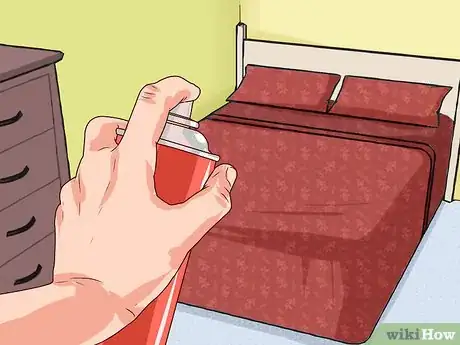




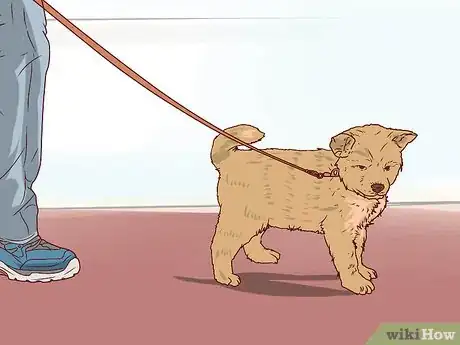

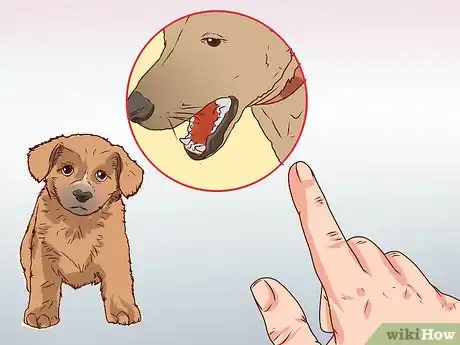



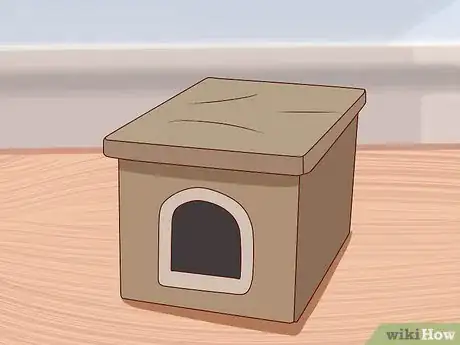



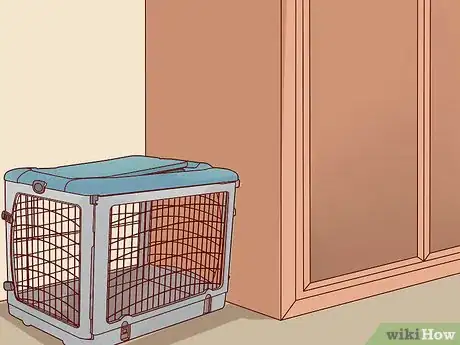
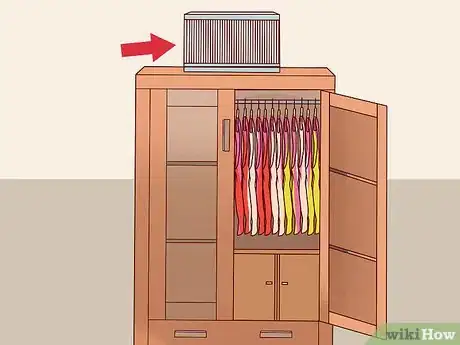
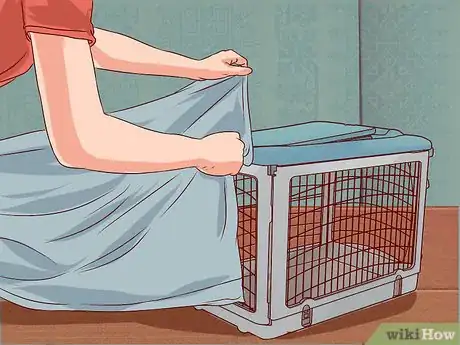

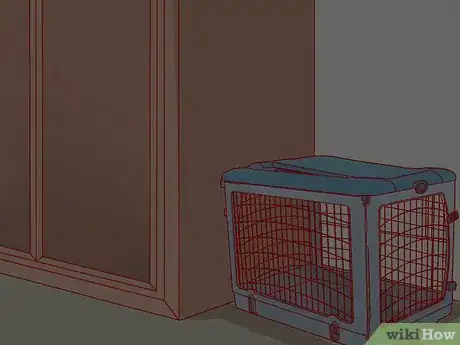
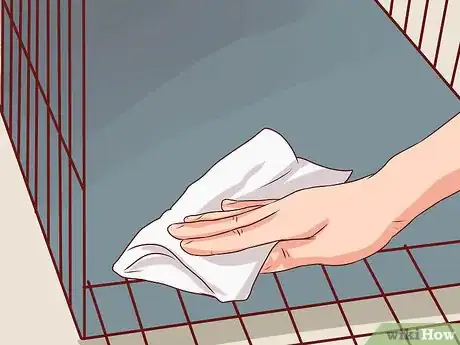

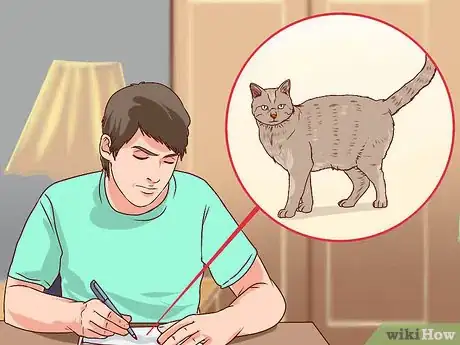








-Step-15-Version-2.webp)

























































